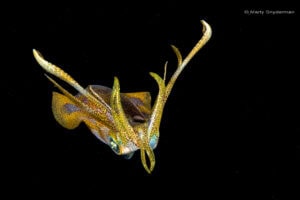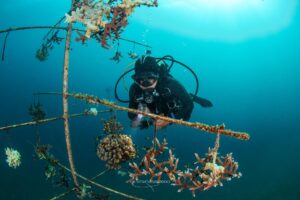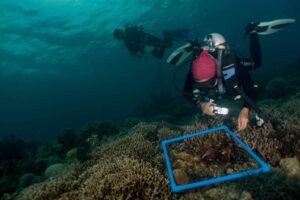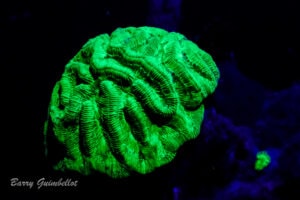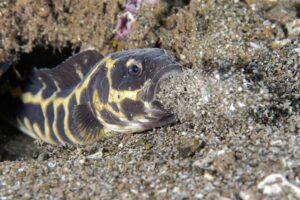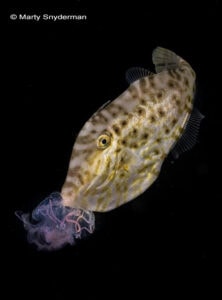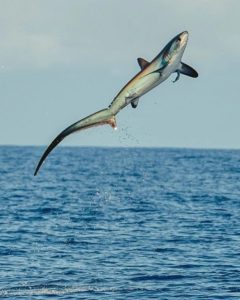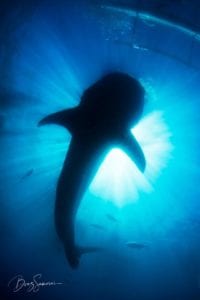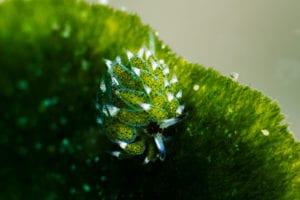A Great Way to See the Astonishing World of Underwater Colors
Text by Fred Fischer, Chief Technology Officer at Underwater Kinetics, and Marty Snyderman, Atlantis Dive Resorts and Liveaboards Underwater Photography Ambassador
Images by Atlantis ImageMaker, Barry Guimbellot
If you have ever been night diving and witnessed bioluminescence, you are probably still telling your friends about your magical dive. Today, with the latest technology there is another amazing experience for you to have that involves marine life which glows under a black or ultraviolet (UV) light. It is called fluorescent diving.
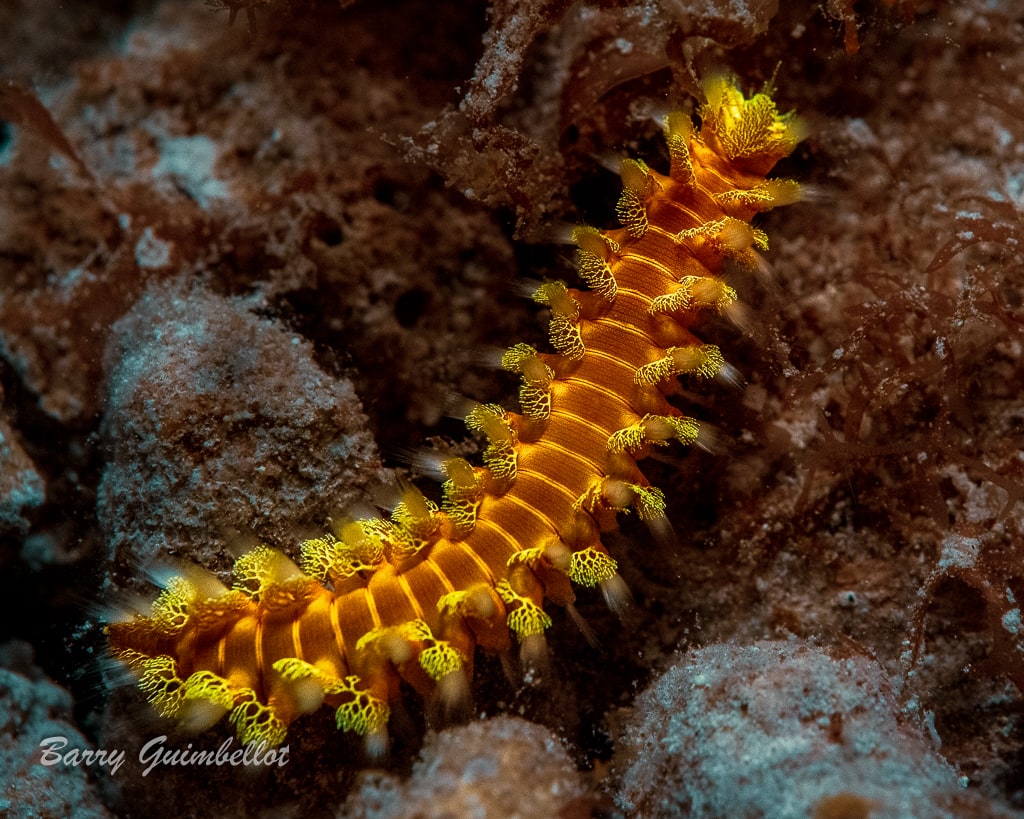
For many years, scientists noticed that some marine animals light up with a spectacular array of colors when viewed under ultraviolet light. These creatures will likely remind you of looking at fluorescent posters under blacklight. When illuminated by a fluorescent light source, chlorophyll and other proteins in the living tissues of some animals glow in brilliant hues of red and green. Coral polyps and anemones typically appear in vivid shades. Many fishes also show signs of fluorescence, although usually not as bright.
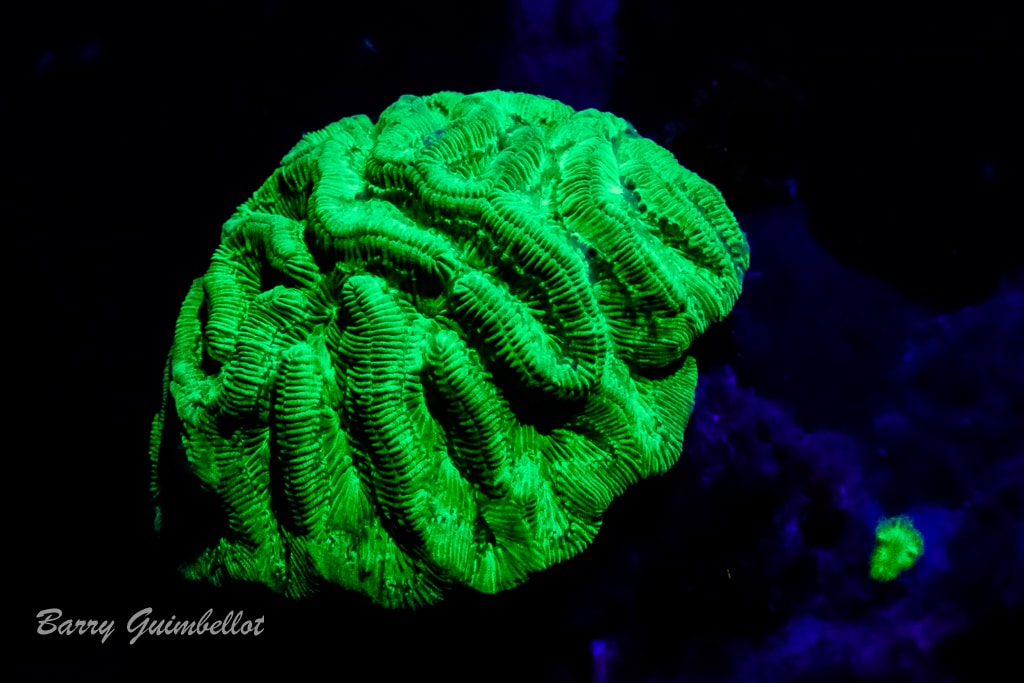
To understand how and why fluorescence works, it helps to know that light is energy that travels in waves. The distance between waves is known as the wavelength. Different wavelengths produce different colors (aka types) of light. Humans can see some light. Collectively, these wavelengths are known as the visible spectrum. Other light we can only feel. Visible light lets us see the world underwater as well as mountains and forests in the terrestrial realm. Blue light has a relatively short wavelength. Green light has a longer wavelength. Red, even longer. Infra-red light makes us feel warm, but as humans, our eyes aren’t capable of seeing it.
Humans can only see light energy in the blue to red wavelength zone. Light outside the blue zone is known as ultraviolet and light outside of the red zone is called Infra-red. Old-style dive lights appear to emit light at all the different wavelengths. It seems like there is more red light that blue, however. Now consider a white LED dive light. Once again you see all of the wavelengths, but in this case, you will see a little more blue than red. This is why LED lights seem to appear bluish while old style lights are reddish.
If you shine a white light on a red sponge, all the light in the visible spectrum is absorbed by the sponge except for the red light. Light from the red end of the visible spectrum is reflected back to your eye and you see a red sponge.
To see fluorescence underwater you need a special LED lamp which only gives off light in a narrow range of wavelengths. This is where things get interesting. In the world of fluorescence, something else happens. You would expect that by shining a blue light on the reef, you would see everything bathed in a bluish cast of light. However, some of the corals and anemones light up green, yellow, or even red. Here is what is happening: The blue light is absorbed by some of the reef dwellers and is released as a new color. The light is not simply reflected. Light of new wavelengths is emitted. The phenomenon is known as fluorescence. Not all marine plants or animals fluoresce, but those that do, have their own distinct color displays for you to see and enjoy.
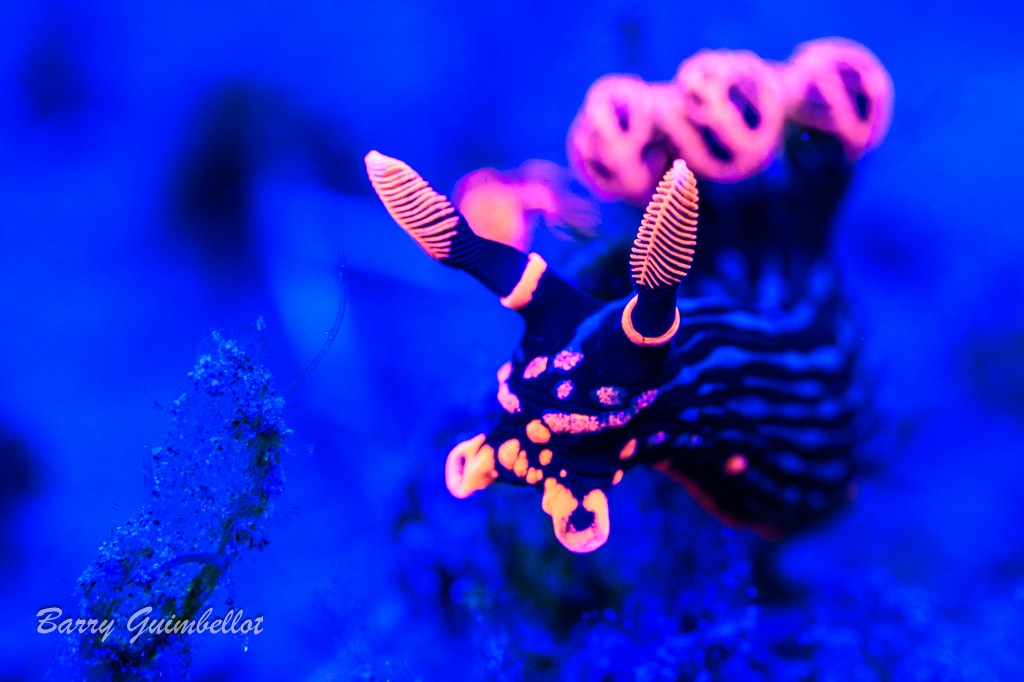
You can go fluorescent diving at night or during the day. Nighttime shows off fluorescence at its brightest. During the day, you will want to find an area of the reef which is not well lit by bright sunlight. Under a ledge, in a cave, or along a shaded wall works well.
Until recently, most “fluorescent dives” were made using a blue LED dive light which emitted off-blue light. The objection to this technique was that blue light given off by an LED caused the entire reef and all of its inhabitants to appear blue. The fluorescent creatures gave off their colors, but they were sometimes overwhelmed by the brightness of the blue light and were hard to see. Divers began to resort to another lighting trick. They looked for a filter which stopped the blue light from reaching their eyes or camera, but allowed all of the other colors to pass through. Only the fluorescent colors could then be seen. Yellow was a solution… kind of. A yellow filter stops blue light and allows the other colors to pass. However, it is rather inconvenient to fit a yellow filter into a dive mask or in front of a camera lens.
Recent advances in lighting technology have made a better solution possible. You can now take along an ultraviolet light which emits wavelengths of light your eyes cannot detect. However, that light bathes the reef in ultraviolet light which fluorescent creatures can absorb, thus allowing them to display their astonishing colors. A mask filter is not required.
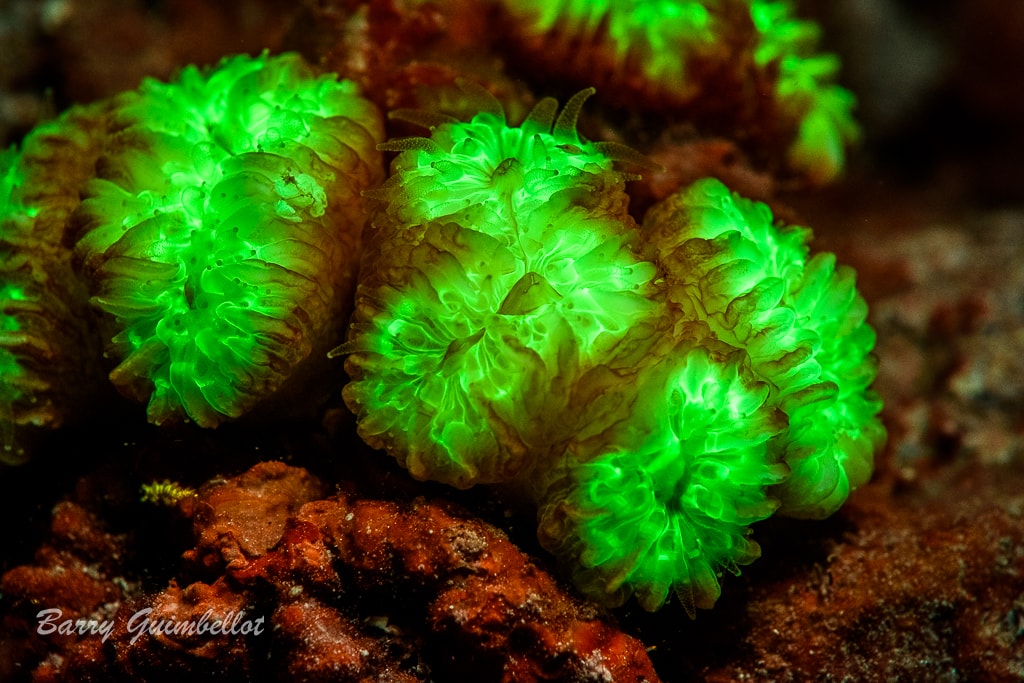
Ultraviolet diving is great fun for those who just want to see the beautiful colors. Those interested in marine biology will probably want to search the internet and read about the science behind this phenomenon to add a new pathway for discovery underwater.
We offer fluorescent dives at both Atlantis Puerto Galera and Atlantis Dumaguete. If you are interested, or even curious, about making a fluorescent dive, please check with the dive guides. They will be happy to accommodate you!


